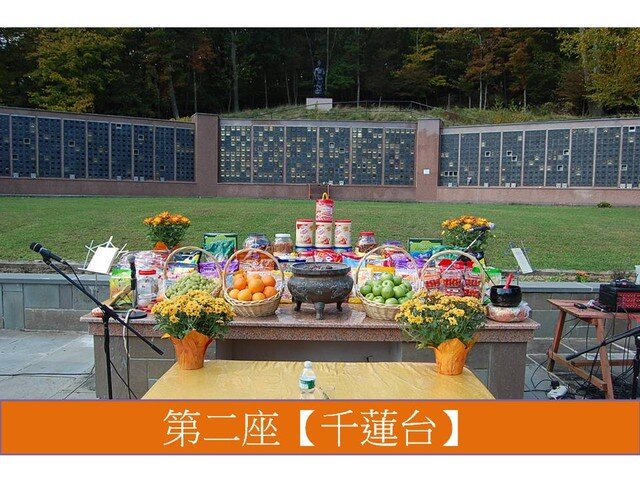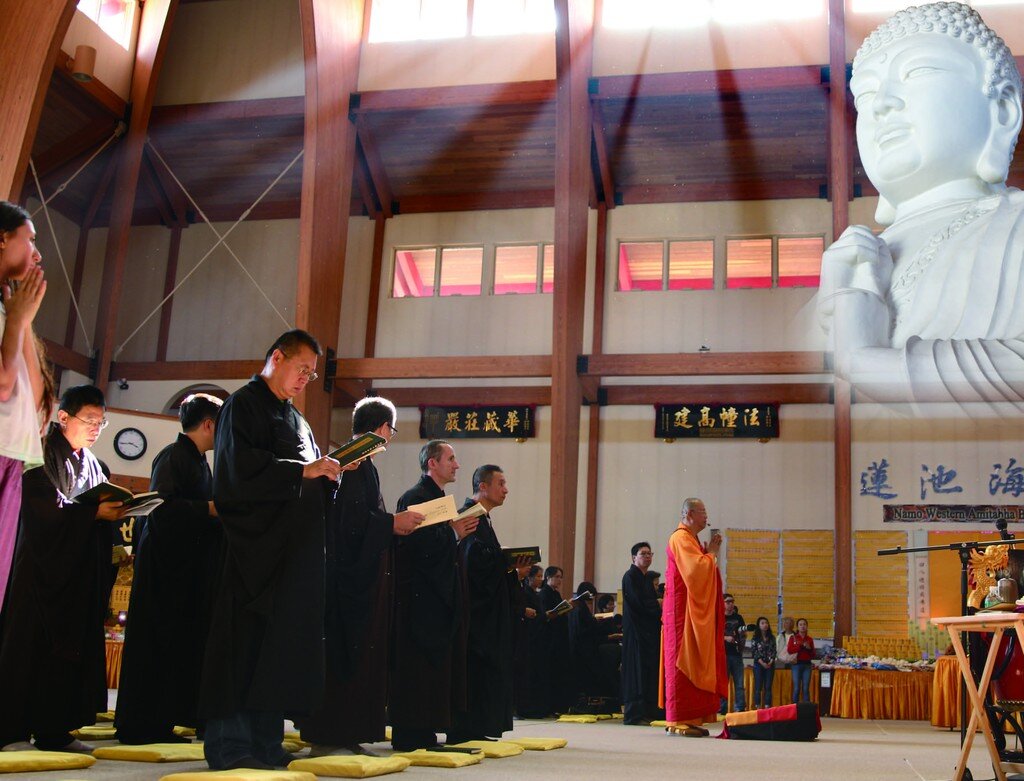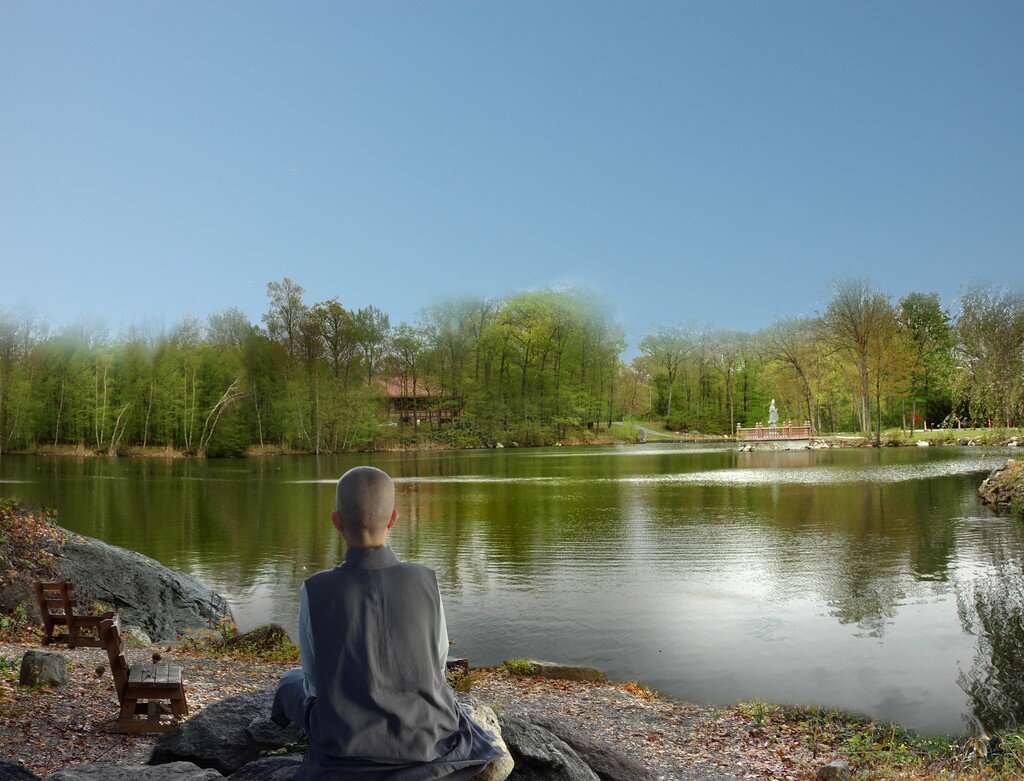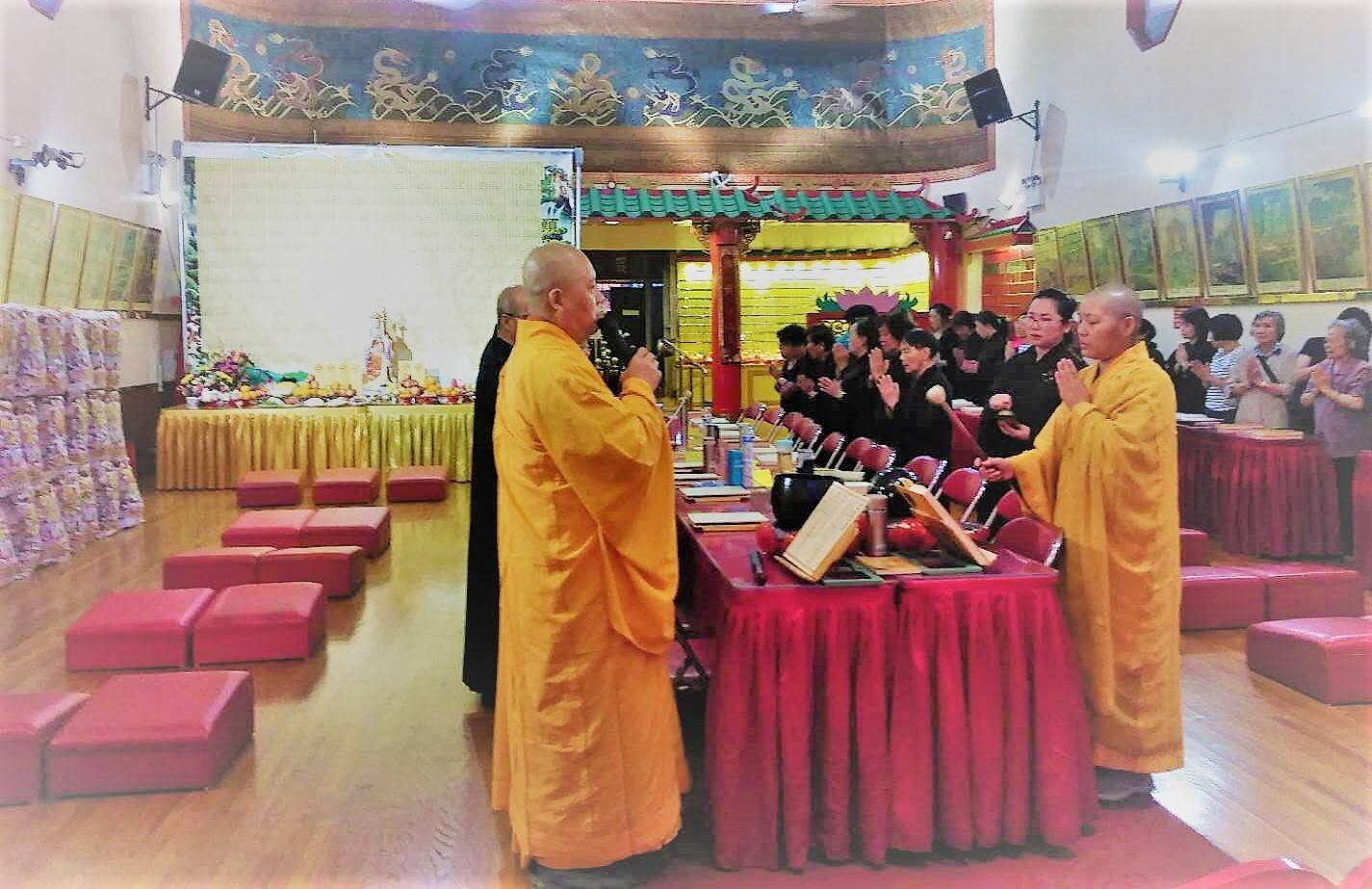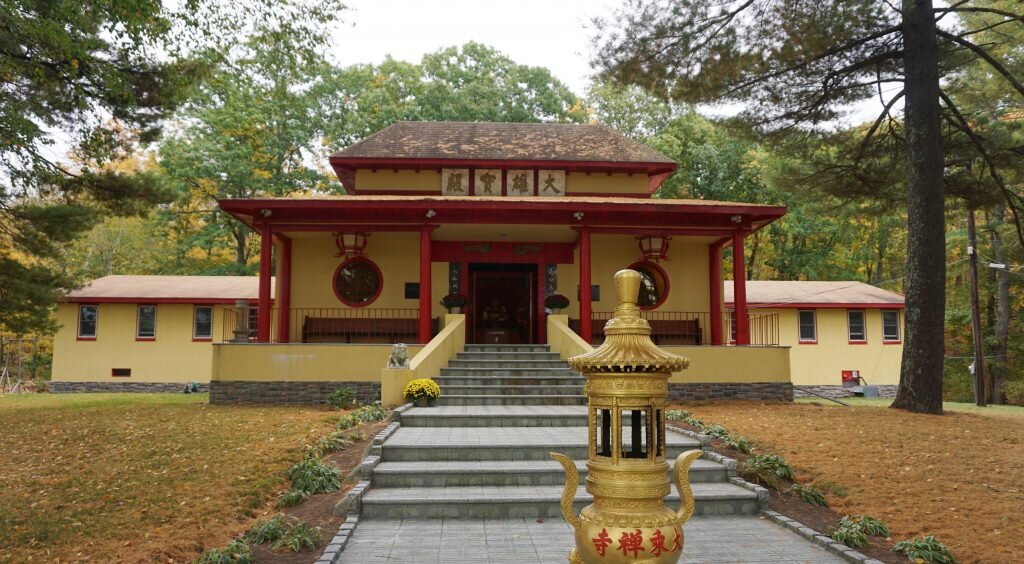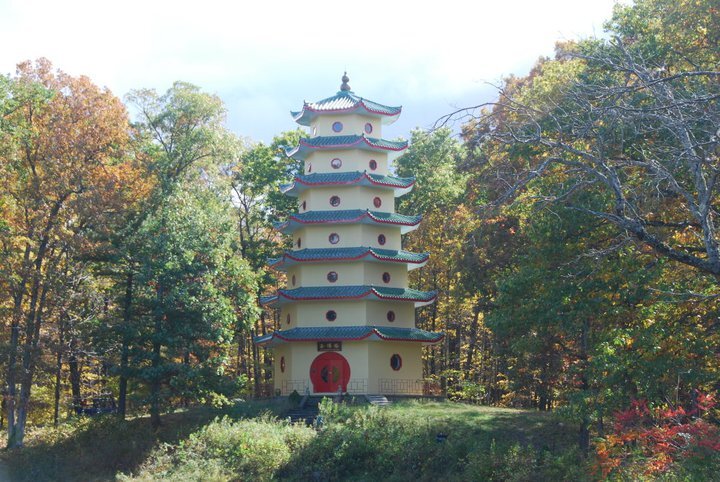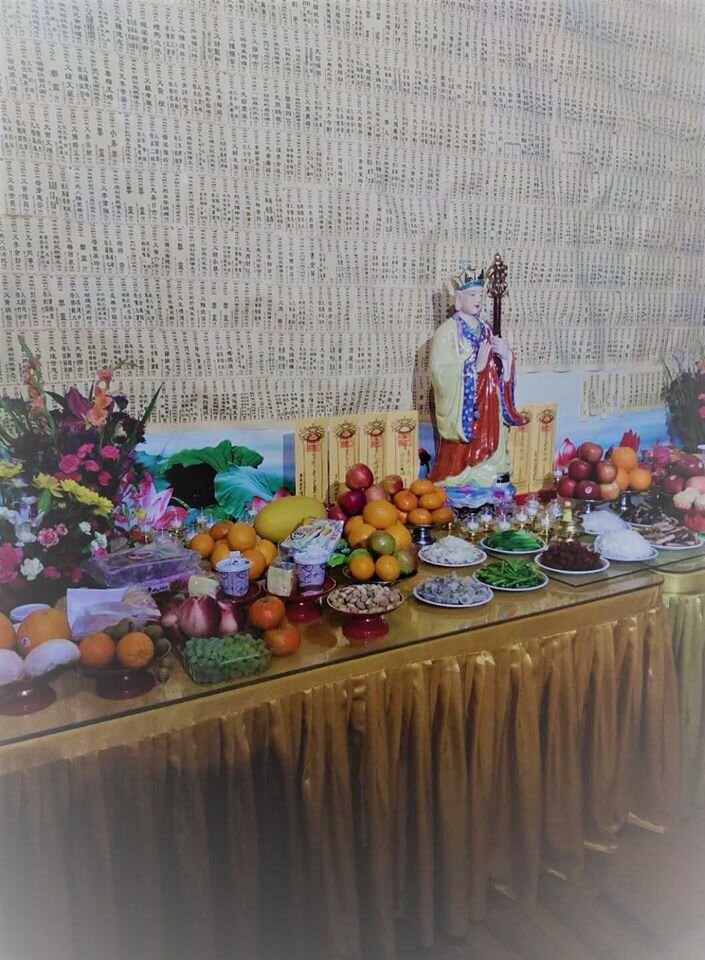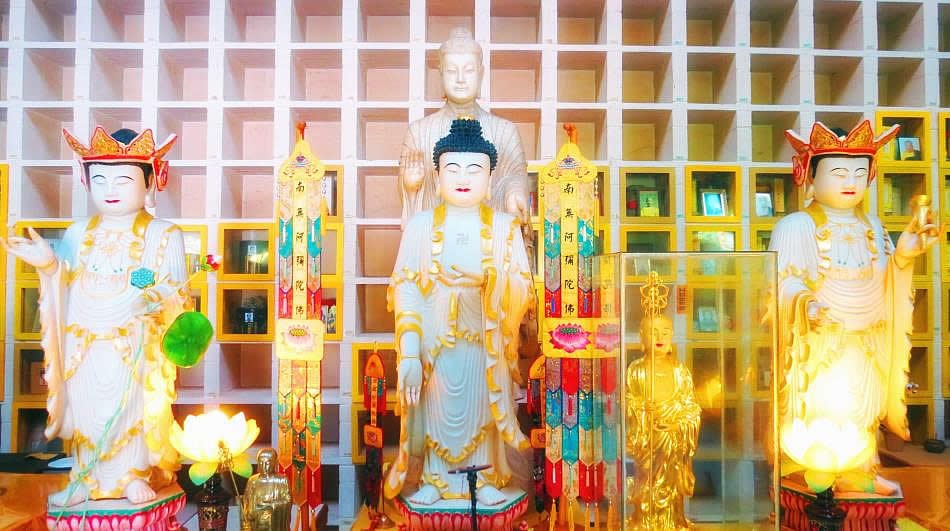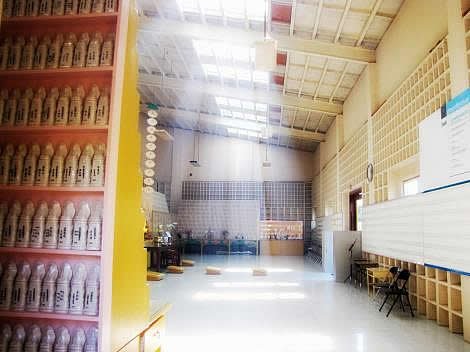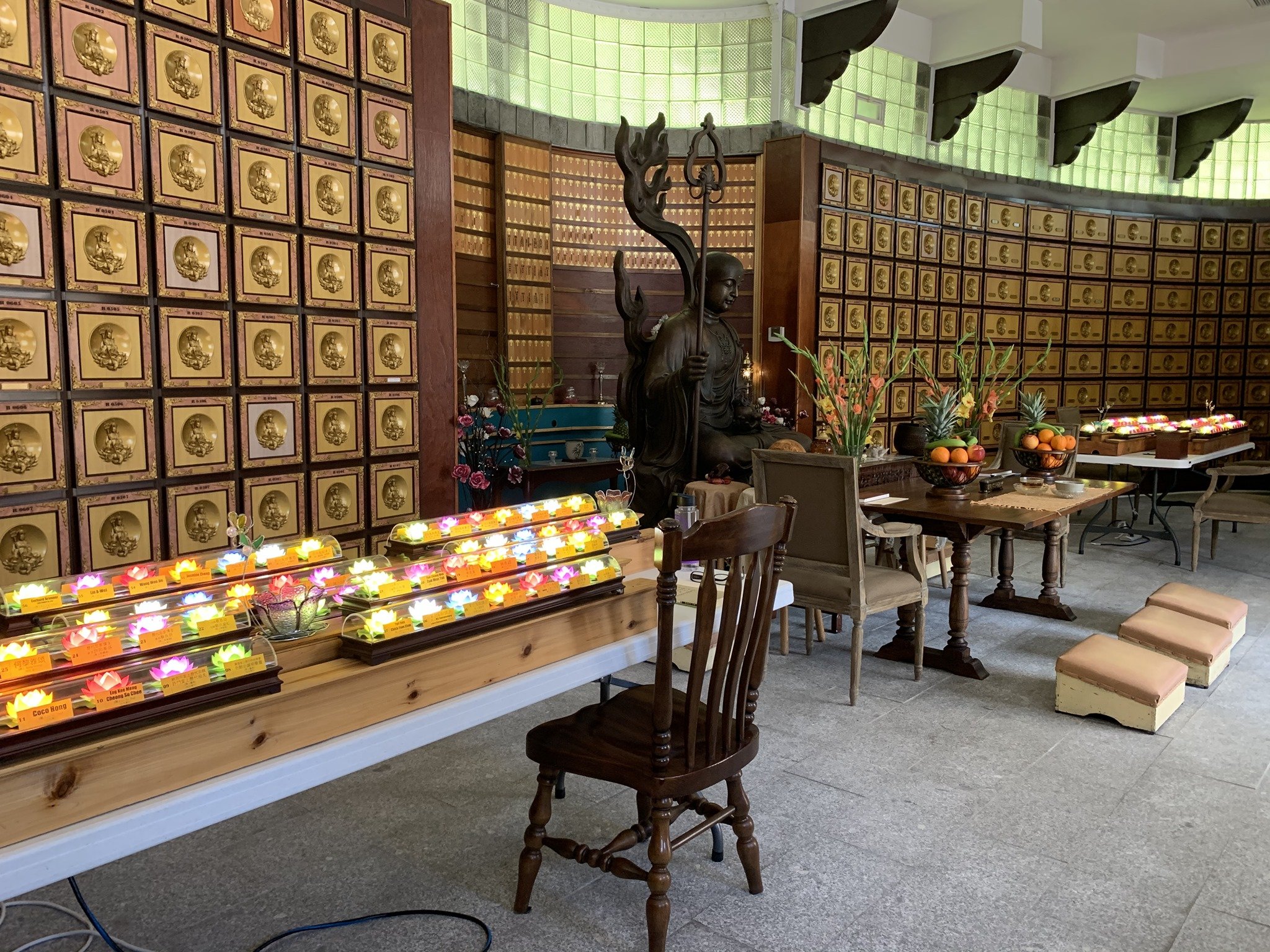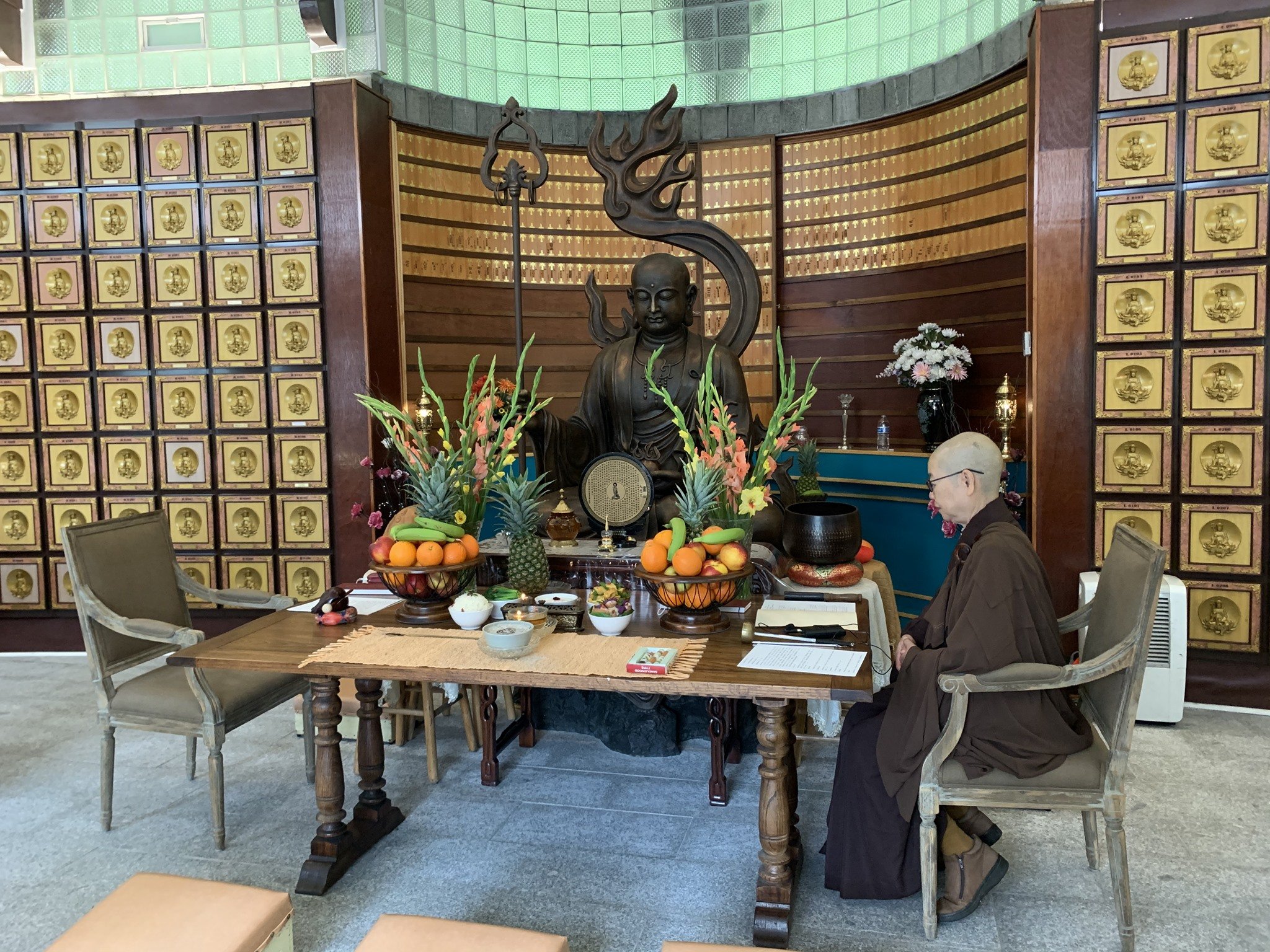Your Custom Text Here
Cemeteries and Funeral - Burial Memorial Altars for Chinese Buddhists in the US
Memorial columbariums, or places to store the urns, ashes, and memento of the deceased, provide a respectful resting place much like a funeral at a tombstone cemetery, with the advantage of frequent Buddhist chanting services (in many cases, several times a day) by monastics or laypeople to honor the departed ancestors. Here are some peaceful places in the United States with Chinese Buddhist columbariums, like a grave site or cemetery for the cremated (incinerated body) remains. (Cremation is commonplace and allowed in Buddhism. Sharira, or relics, may even result for advanced cultivators of the Way!) These cemetaries, graves, memorial gardens, stupas, and pagodas vary in size and architecture and Buddhas featured, but all allow families to peacefully bid good-bye with a dignified funeral ceremony, most hoping that their loved ones enter the practice of the Amitabha Pure Land, or are reincarnated in heaven / heavenly realm, or attain Enlightenment or Nirvana!
In Buddhism, aging, sickness, death, and birth form a cycle of life. Therefore, death isn’t the end of life, but only a stage in the cycle. Death gives birth to new life and continues the cycle of life.
Many temples hold ceremonies and services to transfer the merit to the deceased and help them attain a favorable rebirth. People often light incense and leave offerings of food, flowers, and more. However, the best offering is that of one’s cultivation. The merits gained through our practice can be dedicated to our relatives for their safety, joy, and longevity. By dedicating our merits to deceased relatives, we can help them be reborn in a pure land.
Found in almost all Chinese Buddhist temples are:
Yellow Memorial Tablets or Plaques: To dedicate merits to the deceased / ancestors. Through the tablets, the spirits of relatives and friends who have passed away can receive the blessings of the Buddha, Dharma, and Sangha, repent of past karma, increase blessings and wisdom, and eliminate their own karma obstacles.
Red Blessing Tablets or Plaques: To dedicate merits to the living. One can gain the protection of Buddhas and Bodhisattvas, increase prosperity, longevity and bring blessing to the whole family.
Furthermore, the most popular three figures in Mahayana temples’ memorial areas are:
Amitabha Buddha (阿彌陀佛 Amituofo), the Buddha of Infinite Light and Life. Anyone who recites his name with complete devotion and vows to be reborn in Amitabha Buddha’s Pure Land will be received there.
Avalokitesvara Bodhisattva (觀世音菩薩 Guan Yin Pusa) embodies great compassion and perceives all suffering in the world.
Ksitigarbha Bodhisattva (地藏菩薩Earth Store Bodhisattva, or Dizang Pusa) pledges to alleviate the sufferings of the beings in hell, leading them to happiness.
A Chinese holiday, Qingming jie or Ching Ming Day, is dedicated to paying respect to one’s ancestors, traditionally including sweeping the tombs and making ritual offerings at the gravesites in the springtime.
For more on understanding the rich meaning and tradition behind Chinese Buddhist symbols, visit www.buddhistsymbols.org
New York:
Chuang Yen Monastery / Buddhist Association of the United States
美國佛教會 莊嚴寺
https://www.baus.org/en/visit-us/lotus-memorial-terrace/
2020, Route 301, Carmel, NY 10512
This large center in upstate New York is still close to New York City. The Buddhist Association of the United States started in 1964 in Bronx NY, and by 1975 the plans for the rural complex Chuang Yen Monastery were started. The Thousand Lotus Memorial Terrace is a service Chuang Yen Monastery provides. Twice a year, in the spring and autumn, there are ceremonies during which the ashes of the deceased are placed in the Thousand Lotus Memorial Terraces.
Mahayana Temple
www.mahayana.us
https://www.facebook.com/mahayanatemple/
710 Ira Vail Road, Leeds, NY 12451
The oldest Chinese Buddhist temple outside of California / Hawaii, Eastern States Buddhist Temple was founded in 1962 in New York City Chinatown in Manhattan. The retreat center in upstate New York opened in 1971 and includes a pagoda and memorial buildings and garden areas for the deceased.
Northern California:
City of Ten Thousand Buddhas / Dharma Realm Buddhist Association
萬佛聖城 / 法界佛教總會
http://www.cttbusa.org/halls/rebirth.asp
The Rebirth Hall is on the other side of the main 10,000 Buddha Hall as the Life Lengthening Hall. During ceremonies, mantras and sutras such as the Amitabha Sutra are recited in this hall, which hold niches that can accommodate urns of the deceased. A small fish pond is outside. In this peaceful environment, cultivation and prayer are surely expedited!
Southern California:
Fo Guang Shan Buddhist Memorial Columbarium / Buddha's Light International Association / International Buddhist Progress Society
佛光山西來寺玫瑰陵
http://www.hsilai.org/pl/
The Buddhist Memorial Columbarium at Rose Hills in Whitier by Fo Guang Shan Hsi Lai Temple is likely the largest memorial columbarium / pagoda in the United States. Opened in 1999, this complex is the final resting place for many of the Chinese, Taiwanese, and Asian community members in the Los Angeles area. Below are a couple older videos filmed at the Rose Hills Memorial Park.
Missouri:
Mid-America Buddhist Association
maba-usa.org/niches
Urns of the deceased are store in the Earth Store Bodhisattva Hall (Dizang Hall), and monastics chant sutra and hold funeral and remembrance services for transference of merit frequently. Visitors are welcome to view their ancestor’s name tablets and pay homage. Uniquely, MABA also has a separate area where urns for pets can be temporarily placed and a pet memorial garden.
Texas:
American Bodhi Center / Texas Buddhist Association
americanbodhicenter.org/center-guide/
Located on 515 acres in Waller County (northwest of Houston), land for the American Bodhi Center was purchased in March 2001, as part of the Jade Buddha Temple Texas Buddhist Association, the oldest American Chinese Buddhist group outside of California, Hawaii, and New York. The first phase of construction began in January 2006 with the building of the Memorial Hall, Meditation Hall, Dining Hall, and Dormitories. The memorial hall contains ample room for the urns of the deceased in a quiet, rural setting.
American Bodhi Center
Bao’En Memorial Pagoda hosting a Ching Ming (Qingming) Tomb Sweeping holiday ceremony
Texas Pagoda Chan Monastery / Chung Tai Chan Monastery
http://ctcmusa.org
Another large rural center about an hour from Houston, part of Chung Tai Zen Center of Houston. Currently, the urn niche memorial pagoda / columbarium is the main structure, though eventual plans are to construct a robust Zen meditation retreat facility as well.
Chung Mei Temple / Fo Guang Shan (BLIA/IBPS)
houstonbuddhism.org
The Columbarium at Houston’s Chung Mei Temple provides a peaceful, blissful, and loving resting place for the deceased as well as a dignified setting for family and friends to pay respects to their loved ones. The beautiful temple also has a Zen garden and Water-Drop Teahouse.
Avatamsaka Buddhist Lotus Society
9369 Wilcrest Dr, Houston TX 77099
This Chinese Buddhist temple in Houston has a memorial area for urns and the deceased.
Orlando:
Guang Ming Temple / Fo Guang Shan (BLIA/IBPS)
orlandobuddhism.org
The Memorial Columbarium at Florida’s largest Chinese Buddhist temple sits behind the main shrine building. You can get a good look at it starting at the 0:45 mark at this video below:
